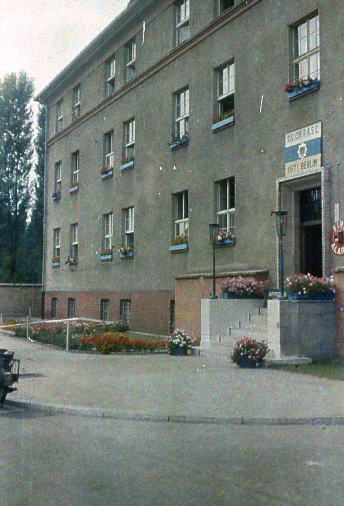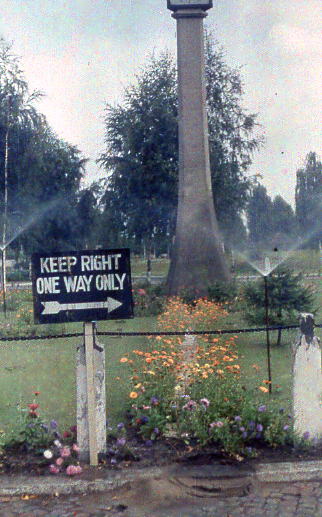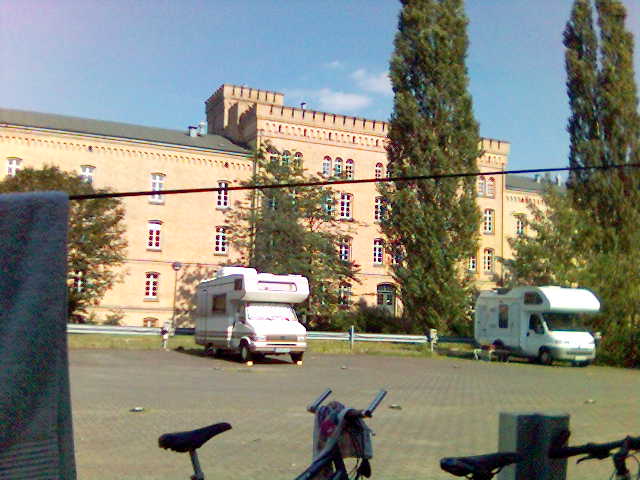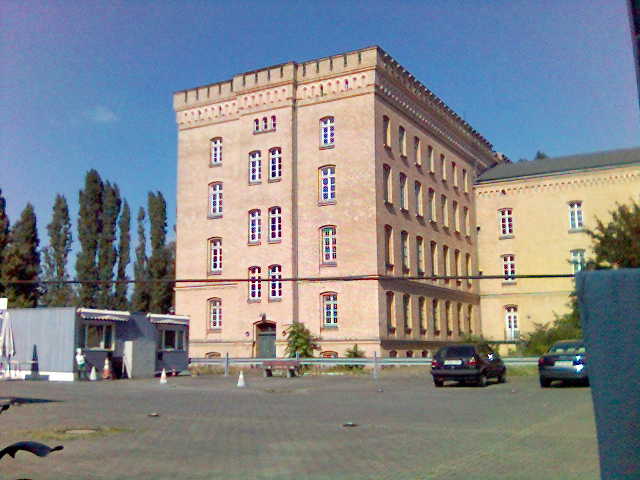Updated 15 June 2024
Original name – Radelandstraße Kaserne
The barracks took its name from Field Marshal Harold Rupert Leofric George Alexander, 1st Earl Alexander of Tunis, KG, OM, GCB, GCSI, GCMG, GCVO, DSO, MC, PC, who was commander 15th Army Group during the Second World War.
Home to:
1st/5th Battalion Queen’s Royal Regiment (West Surrey) 1945 (1)
1st Battalion Oxfordshire and Buckinghamshire Light Infantry 1945-1946 (2)
5th Battalion Dorsetshire Regiment 1946 (3)
2nd Battalion Gloucestershire Regiment 1946 (4)
(1) arrived from Braunschweig 4 Jul 45 – moved to Leverkusen south-west of Wuppertal 2 Nov 45
(2) arrived from Leverkusen south-west of Wuppertal 2 Nov 45 – moved Seesen south-east of Hildesheim 8 Mar 46
(3) arrived from Tostedt south-west of Hamburg 7 Mar 46 – Wavell Barracks 10 Jun 45 – moved to Lüneburg 15 Jun 46
(4) arrived from Soest north-east of Arnsberg 15 Jun 46 – moved to UK 1 Oct 46
More to follow
Source: 21st Army Group later British Army of the Rhine to 1 Mar 49
Part II
REME
8 Lines of Communication Wksp REME 1945-1946
9 Lines of Communication Wksp REME 1945-1946
113 Sub Wksp REME 1946-1948
113 Area Wksp REME 1946-1948
Berlin Wksp REME 1948-1960
14 (Berlin) Inf Wksp REME 1960-1970
14 Fd Wksp (Berlin) REME 1970-1977
14 Berlin Fd Wksp REME 1977-1993
RASC
950 (GT) Coy RASC circa 1949
3 Ind Sta Maint Sec RASC circa 1949
RCT
62 Sqn (Berlin) RCT

HQ 950 Company RASC – 1949

Some of the handywork carried out by the green fingered Captain John Pitman. Himself and several willing British and German drivers managed to give the barracks a domesticated appearance.
Courtesy of Mr David Carpenter
14 Berlin Field Workshop REME
The Workshop was originally formed as Number 2 General Troops Workshop in Stirling, Scotland, in June 1943 just six months after the formation of REME. From there it divided into two: 8 Lines of Communication Workshop REME and 9 Lines of Communication Workshop REME to cross the Channel about 20 days after the invasion of Normandy.
The Workshop arrived in Berlin on 5 July 1945 through Kladow and was temporarily housed in the Daimler-Benz garage depot on the outskirts of Spandau. The unit then moved on to a location where it would spend many years, the site of the Spandau Armaments Depot on 9 July 1945.
Over the period September 1946 and August 1948 the title of the Workshops changed, becoming both 113 Sub Wksp REME and 113 Area Wksp REME.
In August 1948, the title changed yet again to Berlin Wksp REME. This title lasted until February 1960, when the Workshop was renamed 14 (Berlin) Inf Wksp REME, as title which was to last a further 10 years.
In September 1970, the Workshop title was changed to 14 Fd Wksp (Berlin) REME and in May 1977 to 14 Berlin Fd Wksp REME.
It is presumed that the Workshop then remained in Berlin under this title until withdrawn/disbanded in 1993. However this is not confirmed.
Both the Workshop and its Stores Section have been staffed in the main by locally employed civilian tradesmen.
Throughout the period of its existence the Workshop had been responsible for the repair support of units in the British Sector of Berlin and later Berlin Infantry Brigade.

Courtesy of Mr Mick Hall, REME
62 Squadron (Berlin) Royal Corps of Transport
On Operation Granby members of the squadron were detached initially in support of 38 Squadron before the complete squadron deployed in January 1991, remaining in the theatre until April of the same year.
The squadron administered and controlled the operating of the Berlin Military Train, which ran daily from Berlin to Braunschweig, for over 40 years but, following the unification of East and West Germany, the service ceased on 7 February 1991.
62 Transport and Movements Squadron remained in Berlin until the withdrawal of all Allied forces from the city, which took place in 1994, followed by the disbandment of the squadron.
I was posted to 62 Sqn in 1969 and left in 1973. There were three troops: A Tp – which was was equipped with Mercedes trucks; C Tp – which was Frizz trucks that delivered food to the quarters (civilian drivers); D Tp provided the buses (a mixture of RCT drivers and civilians). I see that in the two pictures you can see cars and motor homes parked on what was the square. I went back 3 yrs ago and could not believe the difference to the city. We stayed in the old East where I did many a WRVS trip on a Saturday morning driving the buses.
Yours aye Jock Aitken B.E.M.

Courtesy of Mr Mick Hall, REME.
